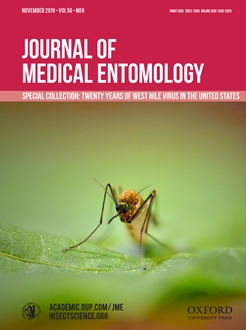The decomposition of a living being involves a series of changes produced by a number of interacting abiotic and biotic factors. In this study, we analyzed the effect of the colonization of blowflies on the decomposition of chicken carcasses and on the emission of sulfur compounds.The loss of the mass of carcasses and the release rate of sulfur compounds were compared for 30 d in chicken carcasses with and without blowflies in field conditions.The tissue degradation was slower in the carcasses without insects compared to those colonized by blowflies.The decomposition stages of fresh, bloated, active decay, and advanced decay were observed in the carcasses without flies; while the decomposition stages of fresh, active decay, advanced decay, and dry remains were identified in carcasses with flies.Two sulfur compounds, dimethyl disulfide and dimethyl trisulfide, were present during the entire decomposition process.The emission of these compounds is not directly associated with the presence of the blowflies' immature stages during the whole decomposition process. However, in cadavers with insects, the highest emission of both compounds occurred in day 2, while in cadavers without insects, the peak of emission was observed in day 4. In addition, the presence of the larval stages I and II of Lucilia eximia (Wiedemann, 1819) (Diptera: Calliphoridae), Chrysomya rufifacies (Macquart, 1842) (Diptera: Calliphoridae), Chrysomya megacephala (Fabricius, 1794) (Diptera: Calliphoridae), and Cochliomyia macellaria Fabricius, 1775 (Diptera: Calliphoridae) matched with the peak of emission of both compounds.
How to translate text using browser tools
2 July 2019
The Colonization of Necrophagous Larvae Accelerates the Decomposition of Chicken Carcass and the Emission of Volatile Attractants for Blowflies (Diptera: Calliphoridae)
Yensy María Recinos-Aguilar,
Maria Dolores García-García,
Edi A. Malo,
Leopoldo Cruz-López,
Julio C. Rojas
ACCESS THE FULL ARTICLE
It is not available for individual sale.
This article is only available to subscribers.
It is not available for individual sale.
It is not available for individual sale.

Journal of Medical Entomology
Vol. 56 • No. 6
September 2019
Vol. 56 • No. 6
September 2019
blowfly
decompositional process
forensic entomology
sulfur compound




